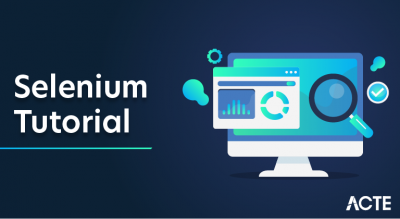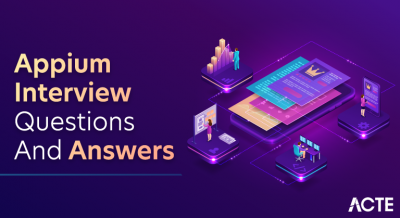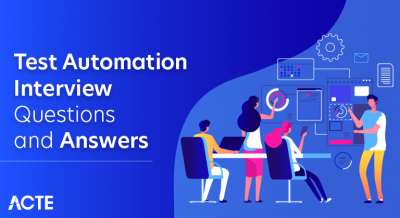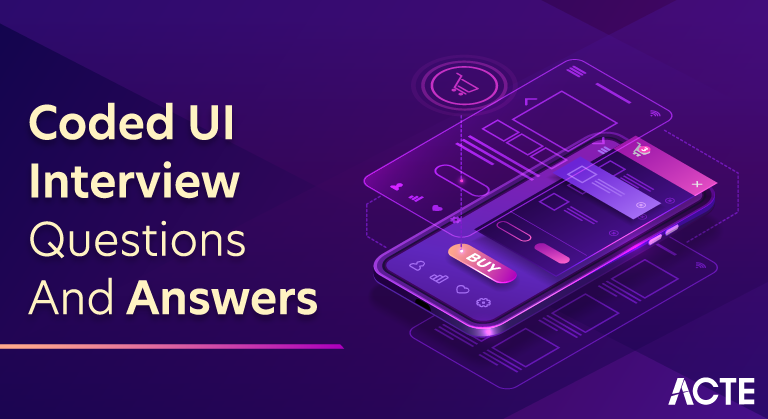
Cloud UI, or User Interface, is a critical component of cloud computing, providing users with a seamless and intuitive experience for accessing and managing cloud resources. It typically features web-based interfaces, enabling remote access from any device with an internet connection. Cloud UIs prioritize user-friendly design and ease of navigation, enhancing the efficiency of cloud services. They often incorporate features like dashboards, drag-and-drop functionality, and real-time updates to streamline cloud resource management.
1.What is a cloud UI, and how does it differ from traditional UI design?
Ans:
A cloud UI, or Cloud User Interface, is the graphical or visual aspect of a software application or system that is accessed through a web browser and hosted on cloud infrastructure. It differs from traditional UI design in that it leverages the cloud to store data and execute tasks, enabling remote accessibility, scalability, and collaboration. Traditional UIs are often tied to a specific local environment or device.
2. What are the key principles of good cloud UI design?
Ans:
Key principles of good cloud UI design include consistency, scalability, responsiveness, user-centeredness, accessibility, and security. Consistency ensures a uniform experience, scalability addresses the ability to handle increased workloads, responsiveness caters to various devices, user-centeredness prioritizes user needs, accessibility ensures inclusivity, and security safeguards data and privacy.
3. How do you ensure a responsive design for cloud applications?
Ans:
To ensure responsiveness, we use fluid grid layouts, flexible images, and media queries in CSS to adapt the UI to different screen sizes and resolutions. We also prioritize touch-friendly elements, optimize performance, and test across multiple devices. Responsive design is essential in the cloud context as users access applications from various devices and locations.
4. What role does user experience (UX) play in cloud UI design?
Ans:
User experience is crucial in cloud UI design as it directly impacts user satisfaction and productivity. A positive UX ensures users can easily navigate, understand, and accomplish tasks within a cloud application. It contributes to user retention, adoption, and ultimately the success of the application.
5. Describe the process of designing a cloud UI from concept to implementation.
Ans:
The process typically involves research, requirements gathering, wireframing, prototyping, user testing, visual design, development, and iterative refinement. It starts with understanding user needs, creating wireframes and prototypes to visualize the design, testing with users, and then moving to visual design and implementation. Continuous feedback and iterations are essential throughout the process.
6. How do you incorporate accessibility features into cloud UI design?
Ans:
Accessibility features in cloud UI design involve providing alternative text for images, ensuring keyboard navigation, adhering to WCAG guidelines, using proper semantic HTML elements, and considering color contrast. Accessibility ensures that users with disabilities can interact with the UI effectively.
7. Explain the concept of “mobile-first” design and its relevance in cloud UI design.
Ans:
“Mobile-first” design is an approach where you design for mobile devices before desktop. In the cloud context, it’s relevant because many users access applications from mobile devices. It prioritizes simplicity, performance, and touch-friendly elements, which are important for cloud UIs accessed on various devices.
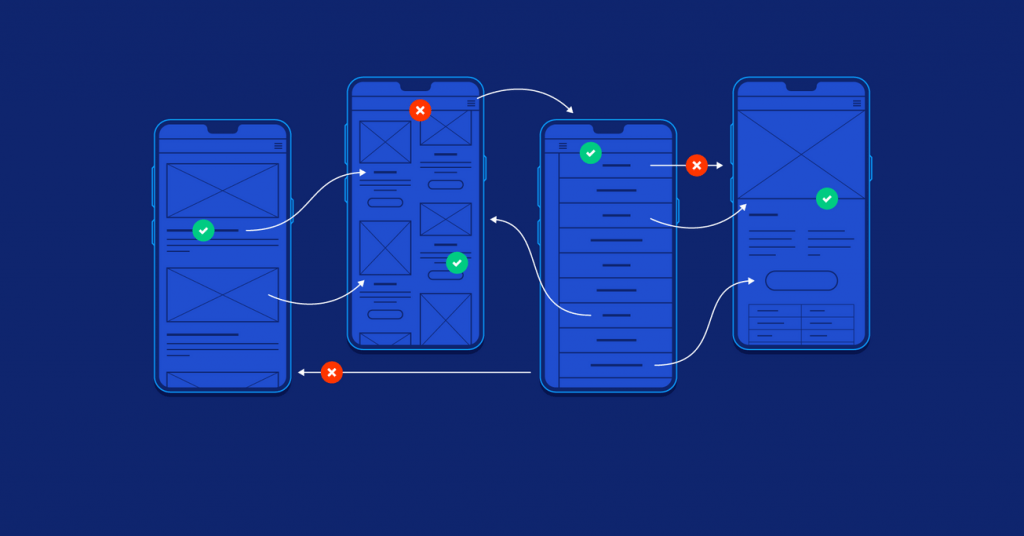
8. What are the best practices for designing a user-friendly dashboard for cloud applications?
Ans:
User-friendly dashboards should offer a clear hierarchy, relevant data visualization, customization options, and easy navigation. They should provide quick access to key information and actions while maintaining simplicity and avoiding clutter.
9. How do you conduct user research for cloud UI design?
Ans:
User research involves methods like surveys, interviews, usability testing, and analytics. It helps in understanding user needs, pain points, and behaviors. In a cloud UI context, it’s essential to consider the remote and collaborative nature of the users and their varying access points.
10. What is the role of wireframing and prototyping in cloud UI design?
Ans:
Wireframing and prototyping help in visualizing and testing the UI design before implementation. Wireframes are basic sketches of the layout and structure, while prototypes offer interactive representations of the UI. They are essential for validating design concepts, user feedback, and functionality before investing in development.
11. What is the difference between UI and UX design, and why is it important to distinguish them?
Ans:
The primary focus of user interface (UI) design is on the interactive and visual elements of a product, such as buttons, layouts, and aesthetics.User Experience (UX) design encompasses the entire user journey, including research, usability, and how users feel about the product. It’s important to distinguish them because they contribute to different aspects of a product’s success. UI addresses the “look and feel,” while UX ensures functionality, ease of use, and user satisfaction.
12. Can you explain the concept of information architecture in the context of cloud UI design?
Ans:
Information architecture describes how elements are arranged and composed in a user interface. In cloud UI design, it involves categorizing and structuring data so that users can easily find, access, and interact with information, especially in a cloud application with extensive data sets. Proper information architecture enhances user efficiency and comprehension.
13. How do you design for multi-platform compatibility in cloud applications?
Ans:
To design for multi-platform compatibility, you should use responsive design techniques that adapt the UI to different screen sizes and input methods. It’s important to consider the unique characteristics of each platform and maintain a consistent user experience across all of them. This often involves creating separate UI components or layouts for web, mobile, and desktop interfaces.
14. What is a style guide, and how does it facilitate consistency in cloud UI design?
Ans:
Documents outlining design principles are called style guides. and guidelines, including color schemes, typography, spacing, and UI element usage. In cloud UI design, it ensures a consistent and cohesive look and feel across the application, making it easier to maintain, update, and scale the user interface while keeping it visually harmonious.
15. How do you ensure that your cloud UI design aligns with brand identity and guidelines?
Ans:
To ensure alignment with brand identity, you should incorporate brand colors, logos, and typography into the UI design. It’s important to follow brand guidelines closely and maintain consistency to reinforce the brand’s image. Additionally, involving the marketing or branding team can help ensure adherence to branding standards.
16. What are the common challenges in designing UI for large-scale cloud applications?
Ans:
Common challenges include managing and presenting vast amounts of data, maintaining high performance, optimizing for scalability, ensuring security, and providing a user-friendly experience. Users of large-scale cloud applications often have diverse needs, so balancing complexity with simplicity is a challenge.
17. How do you design for internationalization and localization in a cloud UI?
Ans:
Internationalization involves designing a UI to support multiple languages and cultures. Localization tailors the UI for specific regions or locales. To design for these, you should use Unicode for text encoding, create flexible layouts to accommodate different text lengths, and use localization files to separate content from code. Additionally, consider cultural preferences and user expectations in design elements.
18. Describe the importance of user feedback in iterative UI design for cloud applications.
Ans:
User feedback is invaluable in iterative UI design since it offers information about how customers engage with the product. It helps identify pain points, preferences, and areas for improvement. This iterative process is essential in refining the UI design to make it more user-friendly and effective.
19. What is the role of A/B testing in refining cloud UI design?
Ans:
In A/B testing, two or more UI versions are compared to see which one does better in terms of conversion rates, user engagement, or other important metrics. It’s a crucial tool for data-driven design because it enables designers to decide on the best course of action based on real user preferences and behavior.
20. How do you design for data visualization and analytics in a cloud UI?
Ans:
Designing for data visualization and analytics involves creating clear and informative representations of data. It’s crucial to choose the right charts, graphs, and visual elements that effectively communicate insights. Additionally, provides interactive features for users to filter and explore data. Design considerations should include legibility, accessibility, and consistency in displaying data across various data sets and devices.
21. Explain the concept of “micro-interactions” and their relevance in cloud UI design.
Ans:
Micro-interactions are subtle, single-purpose UI animations or responses triggered by user actions. In cloud UI design, they play a crucial role in providing feedback, guiding user interactions, and enhancing the overall user experience. Examples include button press animations, error messages, and loading spinners.
22. How do you address security concerns in cloud UI design, especially when handling sensitive data?
Ans:
Security in cloud UI design involves implementing data encryption, secure authentication methods, access control, and regular security audits. Compliance with industry standards and regulations (e.g., GDPR, HIPAA) is essential. It’s vital to collaborate with security experts to identify and mitigate vulnerabilities.
23. Describe the role of animations and transitions in enhancing user experience in cloud applications.
Ans:
Animations and transitions in cloud UI design can create a more engaging and informative experience. They help users understand changes in the interface, provide feedback on actions, and guide the user’s attention. Carefully chosen animations can make complex tasks more intuitive and enjoyable.
24. What are the differences between a user interface and a user experience platform in the cloud context?
Ans:
A user interface (UI) is the graphical representation of an application, while a user experience platform (UXP) is a broader system that encompasses UI design and other elements such as backend services, data management, and analytics. A UXP focuses on providing a seamless and comprehensive user experience by integrating various components, making it more than just the visual aspect.
25. What are the key design considerations for a real-time collaborative cloud application?
Ans:
Key considerations include real-time synchronization, collaboration features like commenting and co-editing, user presence indicators, version control, and conflict resolution mechanisms. The UI should enable users to work together seamlessly and provide clear feedback on changes made by others in real-time.
26. How do you handle user authentication and authorization in cloud UI design?
Ans:
Authorization establishes what actions users are permitted to take, whereas user authentication verifies that users are who they say they are. In cloud UI design, it’s crucial to design secure login and registration processes and implement role-based access control. Multi-factor authentication is often recommended for added security.
27. What is a design system, and how can it streamline cloud UI design processes?
Ans:
A design system is a collection of reusable design components, guidelines, and assets that maintain consistency in UI design. It streamlines cloud UI design processes by providing a unified set of elements, which ensures visual and functional consistency across different parts of the application. This leads to faster development and easier maintenance.
28. How do you design for touch and gesture-based interactions in cloud applications?
Ans:
Designing for touch and gestures involves making UI elements large enough to be touch-friendly, providing intuitive swipe, pinch, and tap interactions, and considering the ergonomics of the device. It’s important to offer visual cues for gestures and ensure that the UI is responsive to various touch inputs.

29. Explain the principles of mobile navigation design in a cloud-based context.
Ans:
Mobile navigation in a cloud context should prioritize simplicity, with a clear and accessible menu structure. Use mobile-friendly navigation patterns like the “hamburger” menu, tab bars, and bottom navigation for primary actions. Minimize the need for excessive scrolling and provide clear pathways for users to access features efficiently.
30. How do you prioritize content and features in a cloud UI when space is limited?
Ans:
Prioritizing content and features in a limited space involves focusing on essential and frequently used elements. Use user research to identify user priorities, employ responsive design techniques, hide less critical content under expandable sections, and consider progressive disclosure to guide users through relevant features.
31. What is the role of color theory in cloud UI design, and how do you choose an appropriate color scheme?
Ans:
Color theory in cloud UI design influences the emotional impact and readability of the interface. It helps establish brand identity and hierarchy. Choosing an appropriate color scheme involves considering the brand’s existing colors, contrast for legibility, and the psychological associations of colors while adhering to accessibility guidelines.
32. How do you design for offline access in a cloud application’s UI?
Ans:
Designing for offline access involves caching essential data and functionality, providing clear offline indicators, and allowing users to continue working locally when they lose internet connectivity. Synchronization with the cloud should be seamless once the connection is restored.
33. Describe the importance of feedback and error handling in a cloud UI.
Ans:
Feedback and error handling are critical in cloud UI to provide users with information about their actions and to guide them through error recovery. Clear feedback informs users about the outcomes of their interactions, while effective error handling helps them correct mistakes, ensuring a smooth and frustration-free user experience.
34. What is the role of gamification in cloud UI design, and when is it appropriate to use?
Ans:
100% automation would be difficult to achieve because there would be many edge test cases and some cases that are executed seldom. Automating these cases that are not executed often will not add value to the automated suite.
35. What is the role of gamification in cloud UI design, and when is it appropriate to use?
Ans:
Gamification involves incorporating game elements like points, badges, and challenges into the UI to engage users and encourage desired behaviors. It’s appropriate in cloud UI when it aligns with the application’s goals, such as enhancing user engagement, learning, or competition. Gamification should be meaningful and not distract from the primary functions.
36. Explain the concept of “mobile app responsiveness” and its implications for cloud UI design.
Ans:
Mobile app responsiveness means designing a UI that adapts to the constraints and capabilities of mobile devices, such as smartphones and tablets. In cloud UI design, this requires optimizing layout, fonts, and interactions for smaller screens, touch input, and varying device orientations to ensure a seamless mobile experience.
37. How do you ensure that your cloud UI is optimized for high performance and low latency?
Ans:
Optimizing for high performance and low latency involves minimizing HTTP requests, compressing assets, leveraging content delivery networks (CDNs), and optimizing server responses. Efficient code and asset management, as well as reducing network requests, contribute to improved cloud UI performance.
38. What is the role of design thinking in the cloud UI design process?
Ans:
Design thinking in cloud UI design involves empathizing with users, defining problems, ideating creative solutions, prototyping, and testing. It places the user at the center of the design process, fostering innovation, user-centric solutions, and iterative improvements in cloud UI.
39. How do you design for scalability and adaptability in a cloud UI?
Ans:
Designing for scalability and adaptability in a cloud UI involves creating modular and flexible UI components that can accommodate changes in user numbers, data volumes, and features. Cloud UIs should be designed with the ability to scale horizontally, efficiently manage resources, and adapt to evolving requirements without major overhauls.
40. Can you describe the key differences between designing for public and private cloud interfaces?
Ans:
Designing for public cloud interfaces often involves a focus on scalability, flexibility, and accommodating a wide range of users. Private cloud interfaces are more tailored to a specific organization’s needs, emphasizing security, data control, and customized features. Design for public clouds may prioritize multi-tenancy, while private cloud design focuses on specific user roles within the organization.
41. Describe the role of user onboarding and tutorials in a cloud application’s UI.
Ans:
User onboarding and tutorials provide new users with guidance on how to use the cloud application effectively. They familiarize users with features, functions, and navigation, reducing the learning curve and increasing user retention and satisfaction.
42. What is the role of microservices architecture in cloud UI design?
Ans:
Microservices architecture breaks down applications into smaller, independently deployable services. In cloud UI design, it impacts how the UI interacts with these services. Design should consider service discovery, load balancing, and consistent UI patterns to work seamlessly with microservices, ensuring a cohesive user experience.
43. How do you approach designing UI for chatbots and conversational interfaces in a cloud context?
Ans:
Designing for chatbots and conversational interfaces involves creating natural and intuitive dialog flows. It requires clear and concise text, logical conversation paths, and visual cues to guide users. Design should also account for handling user requests and providing relevant responses, which often includes integration with Natural Language Processing (NLP) services.
44. Explain the concept of user personas and their relevance in cloud UI design.
Ans:
User personas are made-up depictions of various user kinds, reflecting their goals, behaviors, and needs. In cloud UI design, personas help understand and empathize with users, allowing designers to tailor the interface to specific user groups. This personalization improves the overall user experience and ensures that features align with user requirements.
45. How do you design for personalized user experiences in a cloud application’s UI?
Ans:
Designing for personalization involves using user data and preferences to customize the UI. This can include tailored content recommendations, personalized dashboards, and user-specific settings. The goal is to make users feel that the application understands their needs and adapts to their preferences.
46. What are the design considerations for dark mode and light mode interfaces in a cloud application?
Ans:
Dark mode and light mode interfaces cater to user preferences and environmental conditions. Design considerations should include color contrast, legibility, and user-controlled toggles between modes. It’s important to maintain consistency and readability in both modes to accommodate various user preferences.
47. How do you prioritize content and features for mobile devices in a cloud UI?
Ans:
Prioritizing content and features for mobile devices involves focusing on essential tasks, minimizing clutter, and optimizing for touch interactions. Mobile UIs should emphasize the most frequently used functions and offer responsive designs that adapt to different screen sizes and orientations.
48. Describe the principles of cognitive load reduction in cloud UI design.
Ans:
Cognitive load reduction aims to make the UI more user-friendly by minimizing the mental effort required to use it. Principles include simplifying navigation, providing clear and concise information, grouping related elements, using familiar patterns, and avoiding unnecessary complexity. This reduces cognitive strain on users, enhancing their overall experience.
49. What is the role of user testing in validating and improving cloud UI designs?
Ans:
The process of user testing entails getting input from actual users. to identify issues, assess usability, and refine the design. It helps ensure that the cloud UI aligns with user expectations, enhances usability, and ultimately results in a more user-friendly and effective interface. User testing is an essential part of the iterative design process.
50. Can you describe the key differences between designing for public and private cloud interfaces?
Ans:
Designing for public cloud interfaces often involves a focus on scalability, flexibility, and accommodating a wide range of users. Private cloud interfaces are more tailored to a specific organization’s needs, emphasizing security, data control, and customized features. Design for public clouds may prioritize multi-tenancy, while private cloud design focuses on specific user roles within the organization.
51. How do you design for the Internet of Things (IoT) in a cloud UI?
Ans:
Designing for IoT in a cloud UI involves creating a user-friendly interface to control and monitor IoT devices. It should offer real-time data visualization, remote device management, and support for various sensors and actuators. Design also needs to account for different device form factors and data types.
52. What is the role of microservices architecture in cloud UI design?
Ans:
Microservices architecture breaks down applications into smaller, independently deployable services. In cloud UI design, it impacts how the UI interacts with these services. Design should consider service discovery, load balancing, and consistent UI patterns to work seamlessly with microservices, ensuring a cohesive user experience.
53. How do you approach designing UI for chatbots and conversational interfaces in a cloud context?
Ans:
Designing for chatbots and conversational interfaces involves creating natural and intuitive dialog flows. It requires clear and concise text, logical conversation paths, and visual cues to guide users. Design should also account for handling user requests and providing relevant responses, which often includes integration with Natural Language Processing (NLP) services.
54. Explain the concept of user personas and their relevance in cloud UI design.
Ans:
User personas are made-up depictions of various user kinds. reflecting their goals, behaviors, and needs. In cloud UI design, personas help understand and empathize with users, allowing designers to tailor the interface to specific user groups. This personalization improves the overall user experience and ensures that features align with user requirements.
55. How do you design for personalized user experiences in a cloud application’s UI?
Ans:
Designing for personalization involves using user data and preferences to customize the UI. This can include tailored content recommendations, personalized dashboards, and user-specific settings. The goal is to make users feel that the application understands their needs and adapts to their preferences.
56. What are the design considerations for dark mode and light mode interfaces in a cloud application?
Ans:
Dark mode and light mode interfaces cater to user preferences and environmental conditions. Design considerations should include color contrast, legibility, and user-controlled toggles between modes. It’s important to maintain consistency and readability in both modes to accommodate various user preferences.
57. How do you prioritize content and features for mobile devices in a cloud UI?
Ans:
Prioritizing content and features for mobile devices involves focusing on essential tasks, minimizing clutter, and optimizing for touch interactions. Mobile UIs should emphasize the most frequently used functions and offer responsive designs that adapt to different screen sizes and orientations.
58. Describe the principles of cognitive load reduction in cloud UI design.
Ans:
Cognitive load reduction aims to make the UI more user-friendly by minimizing the mental effort required to use it. Principles include simplifying navigation, providing clear and concise information, grouping related elements, using familiar patterns, and avoiding unnecessary complexity. This reduces cognitive strain on users, enhancing their overall experience.
59. What is the role of user testing in validating and improving cloud UI designs?
Ans:
The process of user testing entails getting input from actual users. to identify issues, assess usability, and refine the design. It helps ensure that the cloud UI aligns with user expectations, enhances usability, and ultimately results in a more user-friendly and effective interface. User testing is an essential part of the iterative design process.
60. How do you handle cross-cultural design considerations in cloud UI design?
Ans:
Cross-cultural design involves understanding cultural norms, preferences, and sensitivities. It’s essential to use culturally appropriate visuals, symbols, and colors. Language localization is also critical, as well as adapting design elements to align with the cultural context of the target audience.
61. Can you explain the role of motion design and micro-animations in cloud UI?
Ans:
Motion design and micro-animations serve to make interactions more engaging and informative. They guide users’ attention, provide feedback on actions, and create a more dynamic and appealing user experience in cloud UI. These subtle animations help users understand transitions and changes within the interface.
62. What are the best practices for designing error messages in a cloud application’s UI?
Ans:
Effective error messages should be clear, concise, and specific. They should explain the issue, suggest possible solutions, and provide guidance on how to correct errors. Visual cues like color and icons can also help convey the message. Avoid technical jargon and use plain language for accessibility.
63. How do you ensure that a cloud UI is compliant with accessibility standards?
Ans:
Ensuring WCAG compliance involves following accessibility guidelines for text alternatives, keyboard navigation, focus states, contrast ratios, and more. Designers should test the UI with screen readers, keyboard-only navigation, and follow WCAG guidelines to guarantee an accessible experience for users with disabilities.
64. Describe the principles of responsive typography in cloud UI design.
Ans:
Responsive typography involves using flexible font sizes and spacing to adapt to different screen sizes and resolutions. It maintains readability and legibility by adjusting font size, line height, and spacing to ensure that text remains clear and easy to read on various devices.
65. What is the role of progressive web apps (PWAs) in cloud UI design?
Ans:
PWAs offer a seamless user experience, combining the best of web and mobile app features. They can be accessed via web browsers, installed on devices, and provide offline functionality. In cloud UI design, PWAs offer a way to extend the application’s reach and deliver a more app-like experience to users.
66. How do you approach designing UI for voice-controlled and smart home devices in the cloud context?
Ans:
Designing for voice-controlled devices involves creating a conversational UI that understands natural language commands. Visual UI elements may be limited, so it’s essential to prioritize voice interactions and provide clear voice feedback. Additionally, the UI should adapt to various smart home devices and their unique capabilities.
67. Explain the concept of human-centered design and its application in cloud UI design.
Ans:
Human-centered design places the user at the core of the design process, considering their needs, behaviors, and feedback throughout. In cloud UI design, this means understanding user workflows, conducting user research, and continuously testing and iterating the UI to ensure it aligns with user expectations.
68. How do you design for cross-platform consistency while still considering platform-specific conventions?
Ans:
Cross-platform consistency involves maintaining a unified look and feel while respecting the design conventions of each platform (e.g., Android, iOS, web). It’s essential to adapt UI elements to platform-specific guidelines, ensuring a consistent user experience while adhering to the expectations of users on various platforms.
69. What are the best practices for designing UI for mobile devices with varying screen sizes and resolutions?
Ans:
Designing for mobile devices involves creating responsive layouts that adapt to different screen sizes. Prioritize a mobile-first approach, use flexible grids, and consider touch interactions. Test UI on a variety of mobile devices to ensure content and interactions remain effective and usable.
70. How do you design for adaptive content and layouts in a cloud UI?
Ans:
Designing for adaptive content and layouts involves creating a flexible design that can accommodate varying screen sizes and resolutions. Use responsive design techniques, scalable images, and adaptive layouts to ensure that the UI adapts to different devices and screen dimensions.
71. Describe the role of user flows and user journeys in cloud UI design.
Ans:
User flows and user journeys map out the paths users take through a cloud application. User flows define the steps required to complete tasks, while user journeys provide a holistic view of the user’s experience. These tools help designers understand how users interact with the system, allowing them to design an intuitive and efficient UI that guides users through their desired tasks.
72. How do you address performance optimization for cloud UIs on low-bandwidth connections?
Ans:
To optimize performance for low-bandwidth connections, designers should prioritize efficient data transfer, minimize the use of large media files, and implement content caching. Additionally, using responsive design techniques can reduce unnecessary data downloads and enhance the UI’s speed and usability.
73. What is the role of gamification in enhancing user engagement in cloud applications?
Ans:
Gamification incorporates game elements into the UI to motivate and engage users. It provides rewards, challenges, and a sense of achievement. In cloud applications, gamification can encourage user interaction, knowledge retention, and competition, ultimately increasing engagement and user satisfaction.
74. How do you ensure that a cloud UI is accessible to users with disabilities?
Ans:
To ensure accessibility, cloud UIs should adhere to WCAG guidelines, offering features like screen reader compatibility, keyboard navigation, high contrast, and text alternatives for images. The demands of people with a range of disabilities should be taken into account by designers and conduct usability testing with individuals who have disabilities to identify and address accessibility issues.
75. What is the importance of load times and perceived performance in cloud UI design?
Ans:
We cannot pass the password directly to the field for that we need to encrypt the password. In CODEDUI we can use Playback.EncryptText(“String value”);, which gives you an output of encrypted string values as a password.
76. What is the importance of load times and perceived performance in cloud UI design?
Ans:
Load times and perceived performance significantly impact user satisfaction. Slow loading can lead to user frustration and abandonment. Designers should optimize assets, implement lazy loading, and provide visual feedback during loading to improve perceived performance and create a more positive user experience.
77. Explain the role of data visualization in providing insights to users in a cloud application.
Ans:
Data visualization uses charts, graphs, and other visual elements to represent complex data in an understandable format. In cloud applications, data visualization is crucial for presenting insights and trends, allowing users to make informed decisions and extract value from large datasets.
78. How do you design for a seamless user experience when transitioning between cloud services?
Ans:
Seamless transitions between cloud services require a unified design language, consistent navigation, and a clear path for users to switch between services. Designers should maintain common UI elements, ensure data consistency, and prioritize an integrated user experience across the cloud ecosystem.

79. What are the challenges and solutions in designing UI for 3D and augmented reality cloud applications?
Ans:
Challenges in 3D and augmented reality UI design include interaction design for spatial environments and ensuring optimal performance. Solutions involve creating intuitive gesture-based controls, optimizing 3D assets, and providing clear visual cues to guide users within the augmented reality space.
80. Describe the role of analytics and user behavior tracking in iterative cloud UI design.
Ans:
Analytics and user behavior tracking help designers gather data on how users interact with the UI. This data is used to identify pain points, popular features, and areas for improvement. It guides the iterative design process, allowing designers to make informed decisions and prioritize enhancements based on real user behavior.
81. What are the key considerations in designing UI for mixed-reality experiences in the cloud?
Ans:
Designing for mixed-reality experiences in the cloud involves considerations for spatial interactions, real-world integration, and user engagement. It’s important to create intuitive 3D interfaces, incorporate spatial audio, and ensure data synchronization between the physical and virtual worlds. Maintaining a connection with cloud services is crucial for real-time updates and interactivity.
82. How do you design for security and privacy in a cloud UI, especially when handling user data?
Ans:
Designing for security and privacy includes implementing robust authentication and authorization mechanisms, encrypting sensitive data, and following security best practices. Transparency in data usage, clear privacy policies, and user consent are essential. Security and privacy should be integral to the design process from the outset.
83. Explain the concept of “progressive disclosure” and how it applies to cloud UI design.
Ans:
Information is revealed through a process known as progressive disclosure gradually to prevent overwhelming users. In cloud UI design, it’s relevant for complex interfaces with extensive features. Features or details are presented as needed, reducing cognitive load and allowing users to access advanced functionalities as they become familiar with the application.
84. What is the role of micro-interactions in guiding users and providing feedback in a cloud application?
Ans:
Micro-interactions are small, subtle animations or responses to user actions. They provide feedback on interactions, guide users through processes, and create a more engaging and user-friendly experience. In a cloud application, micro-interactions can help users understand the status of tasks or the outcomes of their actions.
85. How do you design for user trust and transparency in a cloud UI?
Ans:
Designing for user trust and transparency involves clear communication about data collection and usage. It includes providing easily understandable permission requests, clear privacy settings, and notifications about data access. Transparent language and user control build trust and enhance the user experience.
86. Describe the principles of design ethics and their application in cloud UI design.
Ans:
Design ethics involve considering the ethical implications of design decisions, including user manipulation, privacy, and inclusivity. In cloud UI design, ethics are applied by prioritizing user well-being, respecting privacy, and avoiding dark patterns that exploit users. Ethical design promotes trust and integrity.
87. How do you design for cross-device and cross-platform consistency in a cloud application’s UI?
Ans:
Designing for consistency involves using a shared design system, responsive design principles, and adherence to platform-specific guidelines. Elements like typography, color, and UI components should remain uniform, ensuring a cohesive user experience across various devices and platforms.
88. How do you approach redesigning a legacy UI for migration to a cloud-based environment?
Ans:
Redesigning a legacy UI for the cloud involves assessing the legacy system, identifying user pain points, and defining goals for the migration. It often requires rethinking the user interface, updating technology stacks, and integrating cloud services while maintaining data consistency. The process should prioritize user feedback and usability testing.
89. What is the role of design collaboration tools and processes in cloud UI design?
Ans:
Design collaboration tools and processes enhance communication and teamwork among designers, developers, and stakeholders. These tools facilitate sharing design assets, providing feedback, and iterating on UI designs. Effective collaboration streamlines the design process, ensures consistency, and leads to a more successful cloud UI.
90. How do you create a user-centered design culture within a cloud UI design team?
Ans:
Creating a user-centered culture involves fostering empathy for users, conducting regular user research, and involving team members in user feedback sessions. Encourage collaboration and prioritize user needs in design decisions, ensuring that the entire team understands and values user-centered design principles.
91. Explain the concept of “mobile-app-like” experiences in web-based cloud UI design.
Ans:
“Mobile-app-like” experiences in web-based cloud UI design refer to interfaces that mimic the responsiveness and functionality of mobile applications. This includes smooth transitions, touch-friendly interactions, and an app-like feel, despite being accessed through a web browser. It offers users the convenience of mobile apps while using a web-based platform.
92. What are the challenges and opportunities in designing UI for wearable devices in the cloud context?
Ans:
Designing for wearables presents challenges due to limited screen real estate, unique interaction patterns, and the need for lightweight, context-aware interfaces. Opportunities lie in providing users with at-a-glance information, hands-free functionality, and real-time cloud data access, enhancing the user’s wearable experience.
93. How do you balance aesthetics with usability in cloud UI design?
Ans:
Balancing aesthetics with usability involves using a clean, visually appealing design while ensuring that functionality and user experience are not compromised. Prioritize user-centered design, maintain consistency in layout and navigation, and use color and visuals to enhance the interface without overwhelming users.


